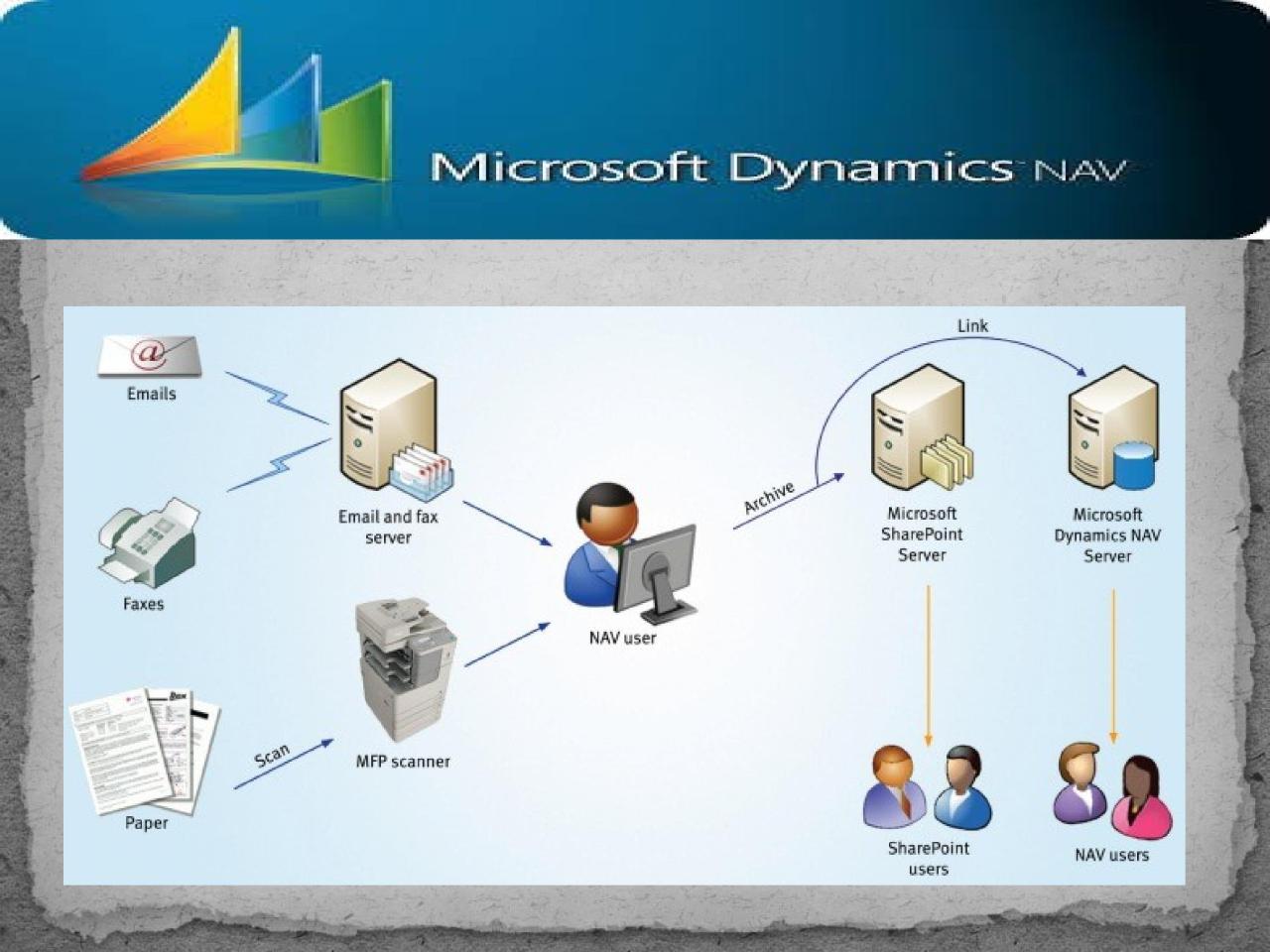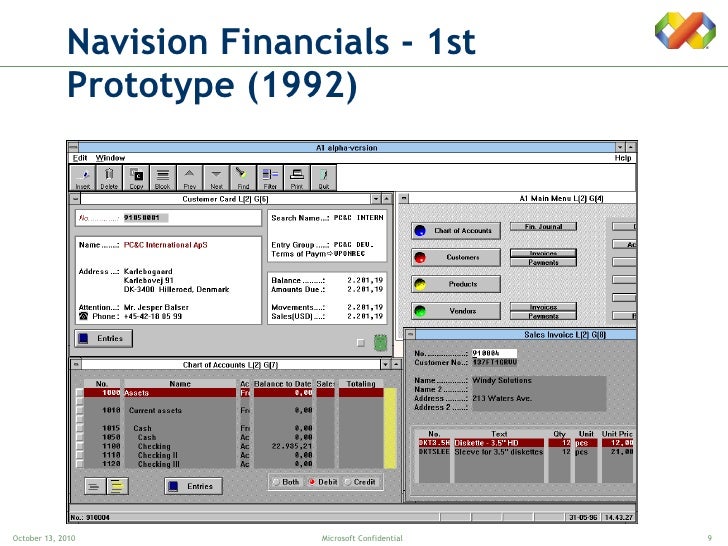Navision program serves as a powerful tool for organizations aiming to enhance their operational efficiency and streamline processes. As an Enterprise Resource Planning (ERP) solution, it encompasses a wide range of functionalities that cater to the diverse needs of businesses across various sectors. Over the years, the Navision program has evolved significantly, integrating advanced features that set it apart from other ERP solutions, thereby establishing its vital position in the market.
This comprehensive overview will delve into the implementation strategies, customization options, and support resources available for the Navision program, ensuring that businesses can fully leverage its capabilities for growth and success.
Overview of Navision Program

The Navision program, known today as Microsoft Dynamics NAV, is an enterprise resource planning (ERP) solution designed for small to medium-sized businesses. It integrates various business processes, enabling organizations to manage their operations efficiently. Navision streamlines functions such as finance, manufacturing, supply chain management, and customer relationship management, thereby enhancing productivity and decision-making.The origins of the Navision program date back to 1984 when it was developed by a Danish company named Navision Software.
Initially, it was a financial management solution, but over the years, it evolved significantly. In 2002, Microsoft acquired Navision Software, leading to substantial enhancements and the rebranding of the solution as Microsoft Dynamics NAV. This evolution has resulted in a robust ERP platform that offers comprehensive functionality, flexibility, and adaptability to changing business needs.
Implementing an erp prestashop system can significantly enhance your e-commerce operations, streamlining processes and improving inventory management. Additionally, if you’re looking for a more comprehensive solution, considering erp dynamics 365 might be beneficial, as it offers robust features for managing various business functions efficiently.
Key Features of Navision
Navision stands out from other ERP solutions due to its distinctive features that cater specifically to the needs of its users. The following aspects highlight what makes Navision particularly effective for businesses:
- User-Friendly Interface: The intuitive design of the interface allows users to navigate easily, reducing the learning curve and enhancing user adoption.
- Customization and Scalability: Businesses can tailor the software to meet specific requirements, ensuring that it grows alongside the organization.
- Integration Capabilities: Navision seamlessly integrates with other Microsoft products, such as Microsoft Office and Microsoft Power BI, enhancing overall functionality and data analysis.
- Comprehensive Financial Management: The program provides robust tools for managing finances, including budgeting, forecasting, and reporting, enabling businesses to maintain precise financial control.
- Advanced Supply Chain Management: With powerful inventory management and logistics capabilities, Navision optimizes the supply chain and improves operational efficiency.
“Navision enables organizations to streamline operations, enhance productivity, and drive better decision-making through integrated business processes.”
For businesses seeking to optimize their e-commerce capabilities, the integration of an erp dynamics 365 system can provide substantial advantages in data analysis and operational efficiency. Similarly, utilizing an erp prestashop platform can enhance website functionality and improve customer engagement, making it a valuable choice for online retailers.
Overall, these key features position Navision as a versatile and effective ERP solution suitable for various industries, allowing businesses to respond swiftly to market changes while maintaining operational efficiency.
Implementation of Navision Program

The implementation of the Navision program is a critical phase that ensures its successful integration into an organization. A well-structured approach can facilitate a smoother transition, enhancing operational efficiency and user satisfaction. Understanding the step-by-step process, best practices, and potential challenges is essential for any organization looking to adopt this software.
Step-by-Step Process for Implementing Navision
The implementation process of the Navision program can be broken down into several key phases. Each phase serves a specific purpose and contributes to the overall success of the deployment.
- Project Planning: Establish a project team and develop a detailed implementation plan, outlining timelines, resources, and responsibilities.
- Requirements Gathering: Engage with stakeholders to identify business needs and requirements, ensuring that the solution aligns with organizational goals.
- System Design: Customize the Navision software to fit the organization’s unique processes, ensuring that configurations meet the identified requirements.
- Data Migration: Prepare and migrate existing data into the new system, validating data integrity throughout the process.
- Testing: Conduct rigorous testing of the system, including unit, integration, and user acceptance testing to identify and rectify issues before full deployment.
- Training: Provide comprehensive training sessions for users to familiarize them with the Navision program and its functionalities.
- Go-Live: Officially launch the system, ensuring that support mechanisms are in place for immediate assistance.
- Post-Implementation Review: Assess the implementation process and gather feedback to identify areas for improvement and ensure ongoing support.
Best Practices for Successful Deployment and User Adoption
Implementing the Navision program effectively hinges on adhering to best practices that enhance user engagement and operational efficiency.
“To maximize user adoption, it is crucial to ensure that all stakeholders are involved from the beginning of the implementation process.”
Key best practices include:
- Involve Stakeholders: Engage users from various departments early in the process to gather feedback and foster a sense of ownership.
- Clear Communication: Maintain open lines of communication throughout the project, providing updates and addressing concerns promptly.
- Tailored Training: Offer tailored training sessions that cater to the specific needs of different user groups within the organization.
- Support Systems: Establish a dedicated support team to assist users during the transition phase and beyond.
- Iterative Feedback: Encourage ongoing feedback from users to continuously refine processes and enhance system usability.
Common Challenges and Strategies to Overcome Them
Organizations often face various challenges during the implementation of the Navision program. Recognizing these challenges and implementing effective strategies can significantly mitigate risks.
“Anticipating challenges and preparing strategies in advance is essential for a successful implementation of the Navision program.”
Common challenges include:
- Resistance to Change: Employees may resist adopting new systems. Address this by communicating the benefits and providing adequate training.
- Data Quality Issues: Poor data quality can hinder implementation. Conduct thorough data audits before migration to ensure accuracy.
- Insufficient Training: Inadequate training can lead to confusion and decreased productivity. Ensure comprehensive training programs are implemented for all users.
- Budget Overruns: Implementation costs may exceed initial estimates. Maintain a clear budget and monitor expenses closely throughout the project.
- Integration Problems: Integrating Navision with existing systems may pose challenges. Develop a clear integration strategy and work closely with IT teams.
Customization and Integration
Customizing the Navision program to align with specific business needs is crucial for maximizing its effectiveness within an organization. Tailoring the solution allows enterprises to enhance their workflows, improve user experiences, and optimize operations to better meet their objectives. Additionally, integrating Navision with other software systems and external applications can significantly augment its capabilities, ensuring a seamless flow of information across platforms.
Customization of Navision Program
The customization of the Navision program can be achieved through a variety of methods that cater to unique business requirements. This can include the modification of existing functionalities, the addition of new features, and the personalization of user interfaces. Key customization options include:
- Page Customization: Users can adjust layouts, add fields, and modify filters on pages to present relevant data more effectively.
- Business Logic Modification: Companies can implement custom business rules and logic through code modifications using AL language to suit the specific operational processes.
- Extensions Development: Developers can create extensions that provide additional functionalities, which can be easily installed or uninstalled without altering the base application.
The ability to customize Navision empowers organizations to create a tailored environment that directly addresses their operational challenges and enhances user productivity.
Integration with Other Systems, Navision program
Integrating Navision with other software systems is essential for fostering a cohesive digital ecosystem. This integration facilitates the smooth exchange of data and enhances overall business processes. Integration options include:
- APIs (Application Programming Interfaces): Navision offers REST APIs that enable real-time data exchange with other applications, providing flexibility and scalability.
- Web Services: SOAP and OData web services can be utilized to integrate Navision with external systems, allowing for complex data operations and business workflows.
- Third-Party Middleware: Solutions such as Microsoft Power Automate can be used to create automated workflows between Navision and various external applications, thereby increasing efficiency.
Integrating Navision with these systems ensures that businesses can harness data from multiple sources, driving better decision-making and operational efficiency.
Successful Integrations Examples
Numerous organizations have successfully integrated Navision with third-party tools to enhance their functionalities and improve operational efficiencies. Notable examples include:
- Microsoft Power BI: Many organizations leverage Power BI to create advanced data visualizations from Navision data, empowering stakeholders with actionable insights.
- Shopify and E-commerce Platforms: Retailers often integrate Navision with e-commerce solutions like Shopify, streamlining sales processes and inventory management.
- CRM Systems: Integrating Navision with customer relationship management systems such as Salesforce enhances customer service capabilities and provides a unified view of customer data.
These integrations illustrate how businesses can utilize Navision’s flexibility to create a more interconnected and efficient operational framework.
Training and Support
Providing comprehensive training and support for employees is essential to maximize the benefits of the Navision program. Effective training ensures that team members are well-equipped to navigate the system, leading to improved productivity and smoother workflows. Ongoing support and resources are pivotal in addressing challenges and fostering an environment of continuous learning.
Framework for Employee Training
A structured training framework is necessary to facilitate the learning process for employees using the Navision program. This framework should encompass various learning modalities to accommodate diverse learning preferences. Key components of the training program may include:
- Initial Orientation Sessions: These introductory sessions familiarize employees with the interface and basic functionalities of the Navision program.
- Hands-on Workshops: Interactive workshops allow employees to practice using the software in real-time scenarios, reinforcing their understanding through practical application.
- Advanced Training Modules: For users needing in-depth knowledge, advanced courses can cover specific functionalities or areas such as financial management or supply chain logistics.
- Peer Learning Opportunities: Encouraging knowledge sharing among employees, such as mentorship programs or user groups, enhances collective competency.
Resources for Ongoing Support
To ensure employees can effectively troubleshoot and seek assistance when needed, it is crucial to provide easily accessible support resources. The following resources can significantly enhance user experience:
- Dedicated Help Desk: A help desk staffed with knowledgeable personnel can assist users with immediate issues or questions regarding the Navision program.
- Online Knowledge Base: A comprehensive online repository containing FAQs, user manuals, and troubleshooting guides allows users to find solutions independently.
- Regular Webinars and Updates: Hosting webinars on new features or tips for optimizing the use of Navision keeps users informed and engaged with the system.
- Community Forums: Establishing forums where users can engage with one another promotes collaboration and problem-solving among users.
Evaluating Training Effectiveness
To ensure that training programs provide value, it is essential to evaluate their effectiveness regularly. Measurement approaches can include:
- Surveys and Feedback Forms: Collecting feedback from participants after training sessions can help assess their understanding and identify areas for improvement.
- Competency Assessments: Implementing tests or practical assessments post-training can measure users’ proficiency and comfort level with the Navision program.
- Performance Metrics: Analyzing productivity metrics before and after training can provide insights into the program’s impact on employee performance.
- Follow-up Sessions: Scheduling follow-up training or refresher courses can reinforce skills and address any ongoing challenges users might face.
Training is a vital investment that empowers employees to utilize the Navision program to its full potential, ultimately driving organizational success.